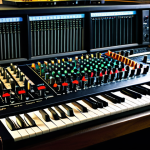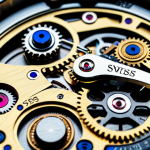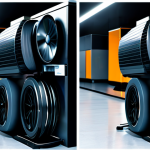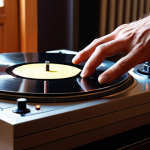Diving into the warm, crackling world of analog recording mixing is like rediscovering music. Unlike the pristine, sometimes sterile sound of digital, analog breathes with a unique energy.
I’ve always been drawn to the imperfections – the subtle hiss, the gentle saturation – that give recordings a character and depth that I find deeply compelling.
There’s something incredibly tactile about working with physical knobs, faders, and tape, shaping the sound in a way that feels almost sculptural. It’s a hands-on process that connects you to the music in a more profound way, and with advancements in plugin emulations, even digital natives can tap into this iconic sound.
The predicted future? A blend of analog warmth and digital precision dominating the charts. Let’s explore this fascinating world in more detail below.
Embracing the Imperfections: The Allure of Analog Warmth
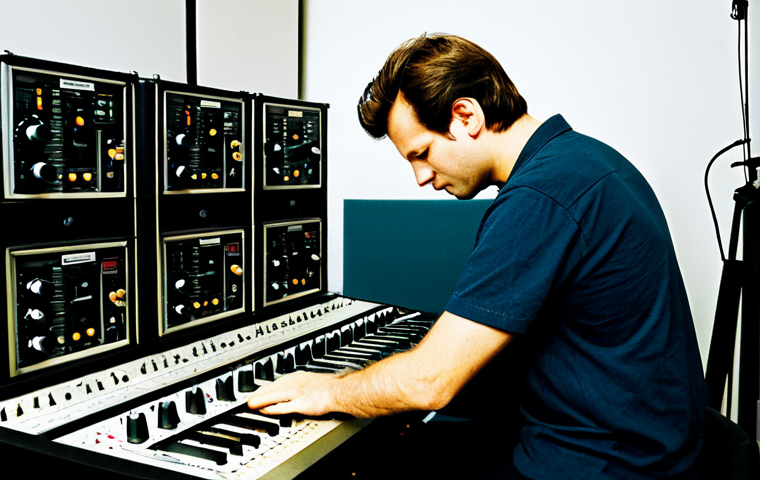
1. The Tangible Experience: Why Hands-On Matters
There’s a magic that happens when your fingers dance across the console. It’s not just about the sound; it’s about the feeling. I remember one time, I was mixing a track for a local band, and I just couldn’t get the bass to sit right in the mix digitally. Frustrated, I switched over to an old analog board I had in storage. Suddenly, the physical act of tweaking the EQ, feeling the resistance of the knobs, gave me a new perspective. I subtly shaped the bass until it felt like it was breathing with the song. It was a revelation – a reminder that sometimes, the best way to connect with music is through physical interaction. The cold precision of a mouse click simply can’t replicate the warmth and immediacy of adjusting a vintage EQ.
2. Saturation and Harmonic Distortion: The Soul of Analog
Digital audio strives for perfection, but sometimes perfection can be, well, a bit boring. Analog gear, on the other hand, embraces imperfection. When you push a signal through a tube amp or a vintage console, you get saturation – a beautiful form of distortion that adds warmth, depth, and character to your sound. It’s like adding a secret ingredient to a recipe that elevates the entire dish. I once recorded a simple acoustic guitar track using both a digital preamp and an analog tube preamp. The digital recording was clean and pristine, but it lacked soul. The analog recording, however, was alive with harmonics, giving the guitar a richness and complexity that the digital version couldn’t match. It’s these subtle harmonic nuances that make analog recordings sound so captivating.
Crafting Your Sound: Essential Analog Mixing Techniques
1. EQing for Character: Sculpting with Analog EQs
Analog EQs are far more than just frequency adjusters; they’re tone-shaping tools that can inject life and character into your mixes. Unlike their digital counterparts, which often aim for surgical precision, analog EQs have a distinct personality. Take the classic Pultec EQ, for example. It’s famous for its ability to boost and cut the same frequency simultaneously, creating a unique and pleasing sonic curve. I’ve found that using a Pultec on vocals can add a silky sheen and a gentle warmth that’s hard to achieve with digital EQ. The key is to experiment and listen carefully to how the EQ interacts with the source material. Don’t be afraid to push the knobs a little further than you normally would – that’s where the magic happens.
2. Compression with Soul: Taming Dynamics the Analog Way
Analog compressors are legendary for their ability to glue tracks together, add punch, and create a sense of cohesion in a mix. While digital compressors offer incredible versatility, analog compressors have a certain mojo that’s hard to replicate. The famous Universal Audio 1176, for example, is known for its aggressive and punchy sound. I often use it on drums to add snap and impact, making them cut through the mix with authority. Similarly, the Teletronix LA-2A is prized for its smooth and forgiving compression, which is perfect for vocals and bass. When using analog compressors, it’s important to listen carefully to how the compressor is responding to the signal. Pay attention to the attack and release times, and adjust them to taste. The goal is to enhance the dynamics of the music, not squash them.
Analog in the Digital Age: Bridging the Gap
1. Plugin Emulations: Analog Sound in a Digital World
The rise of digital audio workstations (DAWs) has made it easier than ever to access the sound of classic analog gear. Plugin developers have created incredibly accurate emulations of legendary consoles, EQs, and compressors, allowing you to inject analog warmth and character into your digital mixes. Some of my favorite plugin emulations include the Waves SSL E-Channel, which replicates the sound of the classic SSL 4000 console, and the Universal Audio Neve 1073, which emulates the iconic Neve preamp and EQ. While plugins can’t fully replicate the experience of working with real analog gear, they’re a fantastic way to add analog flavor to your mixes without breaking the bank. For example, I recently produced a demo for a young artist, and I wanted to give it a vintage vibe. I used a combination of plugin emulations and some creative mixing techniques to create a sound that was both modern and nostalgic.
2. Hybrid Mixing: The Best of Both Worlds
One of the most popular approaches to modern mixing is hybrid mixing, which combines the strengths of both analog and digital. In a hybrid setup, you might use a digital console for routing and automation, while using analog outboard gear for EQ, compression, and other processing. This allows you to take advantage of the precision and flexibility of digital, while still enjoying the warmth and character of analog. I personally use a hybrid setup in my own studio, combining a digital console with a collection of vintage outboard gear. I find that this gives me the best of both worlds – the convenience of digital with the sonic richness of analog. It’s a workflow that allows me to be creative and efficient, while also achieving the sound I’m after.
Understanding Analog Gear: A Quick Reference
| Gear Type | Popular Models | Typical Use | Key Characteristics |
|---|---|---|---|
| Consoles | Neve 80 Series, SSL 4000, API 1604 | Mixing, Routing, Tone Shaping | Warmth, Character, Harmonic Distortion |
| EQs | Pultec EQP-1A, API 550A, Neve 1073 | Tone Shaping, Frequency Correction | Musicality, Unique Curves, Saturation |
| Compressors | Universal Audio 1176, Teletronix LA-2A, dbx 160 | Dynamic Control, Punch, Glue | Aggression, Smoothness, Character |
| Tape Machines | Studer A80, Ampex MM1200 | Recording, Mastering, Tone Shaping | Saturation, Compression, Hiss |
Maintenance and Care: Keeping Your Analog Gear Alive
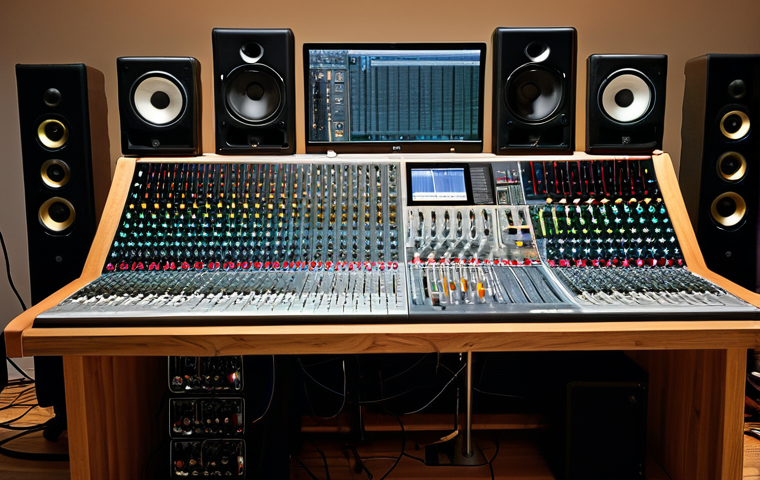
1. Regular Cleaning: Dust is the Enemy
Analog gear is delicate, and proper maintenance is crucial to keeping it running smoothly. Dust is one of the biggest enemies of analog equipment. It can accumulate on potentiometers, switches, and other components, causing them to malfunction or fail altogether. I make it a habit to regularly dust my gear with a soft brush and a vacuum cleaner with a brush attachment. I also use contact cleaner to clean the pots and switches, which helps to remove any dirt or grime that may have accumulated over time. It’s a simple task, but it can make a big difference in the longevity of your gear. Once I neglected to clean my tape machine for too long, and it resulted in a costly repair. Learn from my mistakes – keep your gear clean!
2. Proper Storage: Protecting Your Investment
Proper storage is also essential for preserving the life of your analog gear. Temperature and humidity can wreak havoc on sensitive components, causing them to corrode or break down. I store my gear in a climate-controlled room with a stable temperature and humidity level. I also cover my gear with dust covers when it’s not in use, to protect it from dust and sunlight. If you’re storing your gear for an extended period of time, it’s a good idea to remove any batteries or other power sources, as these can leak and cause damage. I had a friend who stored his vintage synthesizer in a damp basement, and it ended up being completely ruined. Don’t let this happen to you – take the time to store your gear properly.
The Future of Analog Mixing: A Resurgence of Warmth
1. Blending the Best: Analog’s Enduring Legacy
Despite the dominance of digital audio, analog mixing continues to thrive. In fact, there’s been a resurgence of interest in analog in recent years, as more and more musicians and engineers seek out the warmth, character, and soul that analog gear can provide. I believe that the future of mixing lies in blending the best of both worlds – combining the precision and flexibility of digital with the warmth and character of analog. This hybrid approach allows you to create mixes that are both technically sound and emotionally engaging. It’s a way of honoring the past while embracing the future, and I’m excited to see where it takes us.
2. A Timeless Art: The Human Element in Music
Ultimately, analog mixing is about more than just sound – it’s about the human element in music. It’s about the connection between the musician, the engineer, and the listener. It’s about the imperfections, the nuances, and the emotions that make music so powerful. As long as there are people who appreciate these qualities, analog mixing will continue to be a vital and relevant part of the music industry. The future may be uncertain, but one thing is clear: the warmth, character, and soul of analog will never go out of style. I’m currently mentoring a young producer who’s fascinated by analog, and I’m excited to see what he creates with his unique blend of old and new techniques. The possibilities are endless.
In Closing
Diving into the world of analog mixing isn’t just about chasing a vintage sound; it’s about embracing the art of imperfection and connecting with music on a deeper level. Whether you’re a seasoned pro or just starting out, experimenting with analog techniques can open up new sonic possibilities and inspire you to create something truly unique. So, go ahead, get your hands dirty, and let the analog warmth guide your creativity. Trust me, your ears (and your listeners) will thank you!
Handy Tips and Tricks
1. Experiment with different analog gear to find the sound that suits your style. Each piece of equipment has its own unique character, so don’t be afraid to try new things.
2. Use analog EQs to shape the overall tone of your mix, adding warmth and character to individual tracks.
3. Compressors can be used to glue tracks together, add punch, and create a sense of cohesion in your mix.
4. Consider hybrid mixing to combine the strengths of both analog and digital workflows.
5. Don’t forget to properly maintain and store your analog gear to keep it running smoothly for years to come.
Key Takeaways
Analog mixing offers a tangible, hands-on experience that digital audio can’t replicate.
Saturation and harmonic distortion are essential for adding warmth and character to your sound.
Analog EQs and compressors are powerful tools for sculpting tone and taming dynamics.
Plugin emulations and hybrid mixing setups allow you to incorporate analog warmth into your digital workflow.
Regular maintenance and proper storage are crucial for preserving the life of your analog gear.
Frequently Asked Questions (FAQ) 📖
Q: What’s the big deal with analog recording? Why would anyone choose it over digital these days?
A: Honestly, it’s about the vibe, man. Digital’s all clean and perfect, which is cool and all, but analog? It’s got soul.
It’s got that warm, fuzzy feeling you get from a vintage record player. Think of it like this: a perfectly filtered Instagram photo versus a Polaroid.
Both capture the moment, but the Polaroid has character. That slight blur, the imperfect colors – that’s what makes it special. Analog gives you that richness, that subtle distortion that makes music sound, well, alive.
Plus, there’s something really satisfying about physically tweaking knobs and faders instead of clicking around on a screen. It’s like sculpting sound with your hands, you know?
Q: You mentioned plugin emulations. So, can I get that analog sound without actually using tape machines and all that old equipment?
A: Absolutely! That’s the beauty of modern technology. There are tons of incredible plugins out there that meticulously recreate the sound and behavior of classic analog gear.
I’ve used some that are so good, I swear I can almost smell the burning tubes! They nail that subtle saturation, the way the EQ curves interact, and even the noise floor.
It’s a fantastic way to get that analog warmth and character without the hassle of maintaining expensive and temperamental vintage equipment. Think of it like having a whole studio of vintage gear right inside your computer.
For instance, Universal Audio makes some truly outstanding emulations of classic Neve and API consoles. They’re pricey, but the sound is totally worth it.
Q: So, what does the future hold for analog and digital recording? Is it one or the other, or can they coexist?
A: I definitely think they can coexist, and in fact, I believe they will coexist. We’re already seeing it happen. Producers are using digital workflows for convenience and precision, then adding analog warmth and character through plugins or even running tracks through real analog gear for that final touch.
It’s the best of both worlds. Imagine recording a perfectly clean vocal track digitally, then running it through a tube preamp to add some grit and saturation.
Or using a digital compressor for precise control, then following it with an analog EQ for a more musical and pleasing tone. The future isn’t about choosing one over the other; it’s about blending the strengths of both to create something truly special.
It’s like a chef using both modern sous vide techniques and classic grilling methods to create the perfect steak.
📚 References
Wikipedia Encyclopedia
구글 검색 결과
구글 검색 결과
구글 검색 결과
구글 검색 결과

